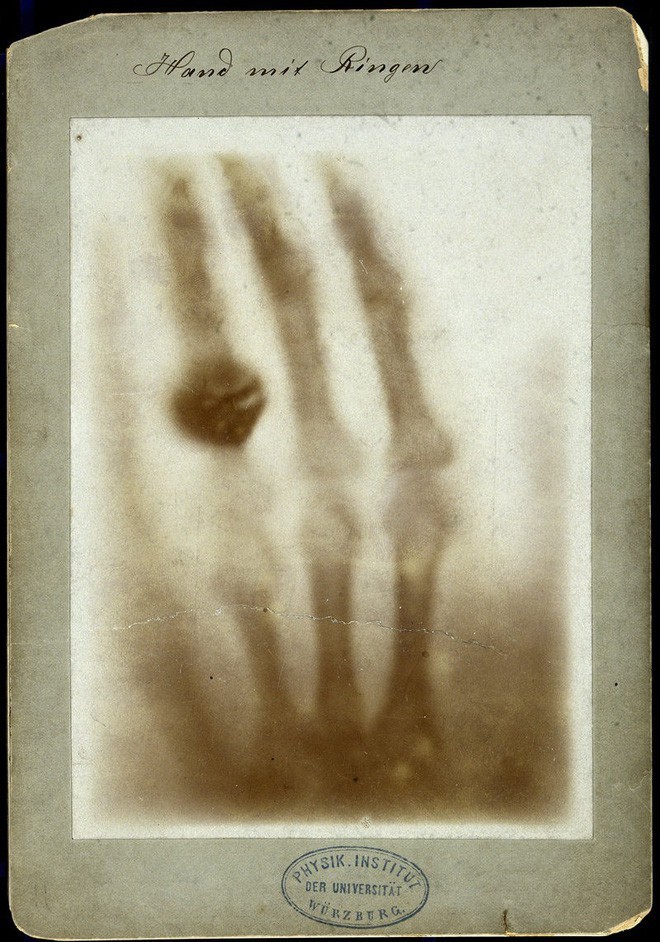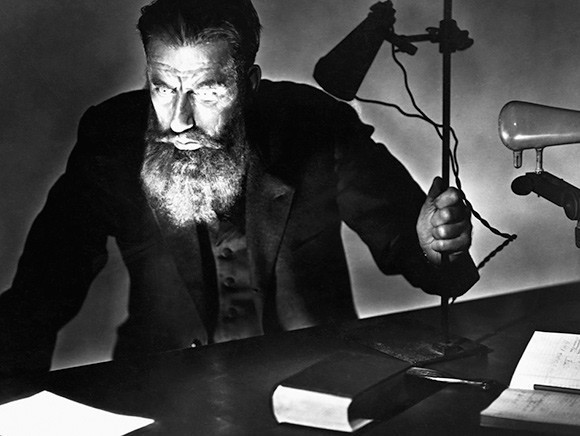The first X-ray image made his wife invent it to be startled
A long story about the history of X-rays - something without which modern medicine will be difficult.
In the second half of 1895, when Anna Bertha Roentgen's husband spent several weeks studying in his lab, she devoted herself to serving her husband.
She silently brought each meal to him when her husband left the meal, and the rest was for her husband to concentrate on research. Whenever her husband needs help, she is ready to answer. In fact, she helped her husband with one hand, literally.

Photo Hand mit Ringen famous.
It is also the most famous photograph of researcher Wilhelm Conrad Roentgen called "Hand mit Ringen". It helped him win the Nobel Prize in Physics in 1901.
The photo is different from any photo taken earlier: it has a slightly "ghostly" hand , with long finger bones and a large black mass, which is Mrs. Roentgen's wedding ring. It is the first plate in human history to be taken with X-rays (not by light as normal images).
This is the evidence that there is a kind of invisible ray that can see through a bright shield, seeing the inner part of the human being. It made the world famous Wilhelm Roentgen.

Wilhelm Conrad Roentgen.
Mr. Wilhelm noticed the lights coming out while sitting " playing against" Crookes - Crookes tube , a lens that was inside a vacuum, a very famous scientific device in the late 1800s. Researchers run an electric current across the poles, creating a stream of light named cathode ray light, composed of electrons.
Locking himself in the laboratory, Mr. Wilhelm studied one of the strange phenomena his colleague discovered: with a bit of aluminum, they could transfer the cathode ray onto a fluorescent screen next to the tube, then The screen will light up.

X-rays helped Wilhelm Conrad Roentgen obtain the 1901 Nobel Prize in Physics.
In early November, he continuously performed experiments in a dark laboratory at the University of Würzburg, Germany. Then he realized a strange occurrence at a point away from the other Crookes tubes: there was a screen coated with barium platinocyanide - the fluorescent material used in film kept glowing every time the current was flowing. through Crookes tube.
He was unsure what this strange phenomenon was, and tried to explain it by countless experiments as well as documenting every single attempt, calling this strange ray "X-rays of Hidden Numbers." " , because the" X "represents the unknown. He took X-rays to look at many different materials, found that with certain materials, X-rays would pass through them.
Few days before Christmas, he called his wife down "for a helping hand" . Mrs. Roentgen raised her hand to a strange 15-minute X-ray. Legend has it that she was terrified to shout "I saw my death!" and never dared to step into her husband's lab. Yes, naturally, my hand bones were visible on the wall, who would think so at that time.

A x-ray of a frog.
His wife was not very interested in this scary image, but other scientific researchers did. Mr. Roentgen sent samples to many physicists throughout Europe, accompanied by scientific reports detailing his discovery.
Among the recipients was Arthur Schuster at the University of Manchester, an expert who studied many different areas of physics such as magnetism, spectroscopy and astronomy. When he received this research report in 1896, he reconstructed this experiment within his research area.
Mr. Schuster captures various photos with X-rays: toads, joints, even the feet of his 6-year-old. He immediately realized the medically valuable benefit of this strange ray, and also realized that it was also a kind of light ray, but it had a lot of energy due to the wavelength of those This ray is very short.

This technology is quickly applied to both medicine and daily life.
Because of the invaluable medical applications that X-rays provide, researcher Wilhelm Roentgen has not applied for a patent for X-rays. So the technology is quickly applied to both medicine and life. daily life Anyone can use X-rays for personal use. Having a diligent husband, he spent 10 hours to take a picture of his wife's broken hip bone.
At that time, the effects of X-rays on health were still unknown. They are invisible, but the effect of X-rays is very clear. The woman had a hip fracture above, after 10 hours of standing before the burned X-ray, many people suffered from hair loss or blisters on many levels. Clarence Dally, an X-ray engineer in Thomas Edison's lab, was exposed to such radiation that he had to cut off his arms, and died at age 39 due to skin cancer.
However, do not worry too much because I have passed that time long ago. The modern version of X-rays is almost harmless.

Hand x-ray.
Through many experiments, scientists measured the amount of radiation a person received when standing in front of the X-ray. At that time, the name Wilhelm Roentgen became famous and popular - it was often called X-ray rays - genes, you may have heard this name already.
Then those guys also gradually quit, leaving only X-rays, X-rays for brevity. However, the phrase "Roentgen" is still used as a unit to measure radiation levels, and in German, X-rays are still known as Roentgen rays - light-gene rays .
- Invent the image thinking machine
- Can not stand up because he was crippled by his wife
- Secret of choosing a wife
- Startled to see the specter of children in the house
- Poetry is fun about the secret of choosing a wife
- Found the tomb of the Nguyen Dynasty's wife at the construction site
- Do not want to have more mother-in-law
- The unexpected reason caused the wife to ban her husband from fishing
- Family is easy to melt if the husband is happier than his wife
- Smart bracelet helps police prosecute the husband suspected of killing his wife
- Die laughing with the most difficult definitions of WIFE
- Invent a bowl made from leaves, replacing a toxic foam food container
 'Fine laughs' - Scary and painful torture in ancient times
'Fine laughs' - Scary and painful torture in ancient times The sequence of numbers 142857 of the Egyptian pyramids is known as the strangest number in the world - Why?
The sequence of numbers 142857 of the Egyptian pyramids is known as the strangest number in the world - Why? History of the iron
History of the iron What is alum?
What is alum?